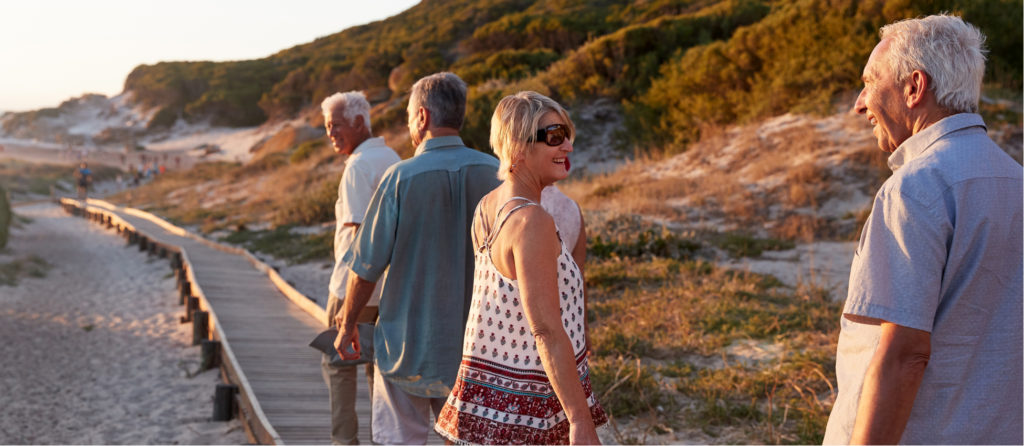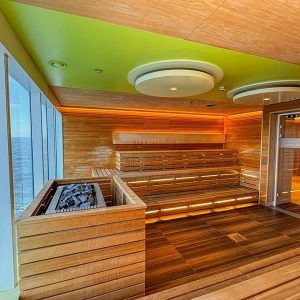I’ve always loved city breaks – the chance to discover somebody else’s history, architecture and lifestyle in the space of a long weekend, and when a city also carries the elite label European Capital of Culture, it’s irresistible. So I jumped at a recent invitation to discover what Denmark’s second city, Aarhus, is going to offer the world during its year as joint European Capital of Culture 2017. A very different package, I imagined from Europe’s other Capital of Culture this year, Paphos.
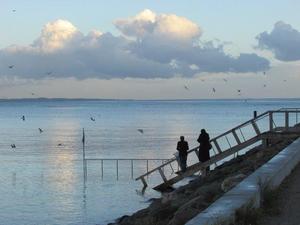 Most people I talked to about my impending trip looked slightly quizzical, some not sure which country Aarhus was in, let alone able pinpoint it on a map. Just for the record, this modest town of around 330,000 inhabitants sits on the east coast of the Jutland Peninsula, or Central Denmark, west of Copenhagen and a three-hour scenic journey from the capital by rail.
Most people I talked to about my impending trip looked slightly quizzical, some not sure which country Aarhus was in, let alone able pinpoint it on a map. Just for the record, this modest town of around 330,000 inhabitants sits on the east coast of the Jutland Peninsula, or Central Denmark, west of Copenhagen and a three-hour scenic journey from the capital by rail.
The Danish pronunciation of Aarhus is more akin to ‘Or-hoos’ though nobody will mind if you do it your way. They’re an easy-going nation of barely 5.5 million people, who all seem to speak sickeningly good English, so you’ll immediately feel part of the action. They are also deemed to be the happiest people in the world and the unwitting ‘inventors’ of hygge, a wellbeing concept that involves a lot of candles, cushions, throws and cuddling up with friends on cold winter nights. What’s not to like about that?
Getting to Aarhus is easy. Rynair has direct flights from London-Stansted to Aarhus and nearby Billund, with British Airways flying to Billund from Heathrow. Or fly to Copenhagen from a number of UK airports with SAS or easyJet, and enjoy a twin-city break by train.
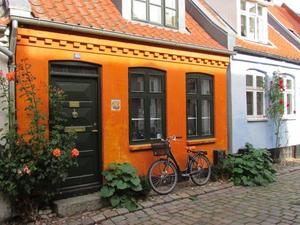 Aarhus was a self-confessed foodie desert for many years, the only Michelin stars twinkling across the water over in Copenhagen, but all that has changed. Three restaurants now have a Michelin star with local chefs becoming champions of fresh produce sourced in the surrounding Jutland countryside. A new Central Food Market with specialist suppliers and food retailers opened in the heart of the city’s atmospheric Latin Quarter in September and for 2017, the city has also been designated European Capital of Gastronomy – the first time a city has held both labels at once.
Aarhus was a self-confessed foodie desert for many years, the only Michelin stars twinkling across the water over in Copenhagen, but all that has changed. Three restaurants now have a Michelin star with local chefs becoming champions of fresh produce sourced in the surrounding Jutland countryside. A new Central Food Market with specialist suppliers and food retailers opened in the heart of the city’s atmospheric Latin Quarter in September and for 2017, the city has also been designated European Capital of Gastronomy – the first time a city has held both labels at once.
The small grid of cobbled streets that make up the Latin Quarter is a lovely area to just stroll and soak up the atmosphere of quaint houses with painted facades and wonky doorways, cosy restaurants and tempting boutiques. And because nothing is far away in this compact city, you are soon down at the waterfront with its arresting new residential developments and promenade. Hire a cycle maybe and head out to the forest or join a guided tour on two wheels. You’ll find lots of ideas at www.visitaarhus.com.
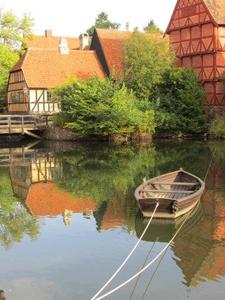 If you’ve limited time, one of the two cultural must-sees is Den Gamle By, an open air museum in the heart of the town where historic buildings from all over Denmark have been assembled to reflect three time periods – 1864, 1927, and 1974. It’s all very cleverly done with costumed interpreters and plenty of audience interaction. Buy a delicious warm pastry from the baker, try a sample of traditional home-brew, and stand in front of a magic screen to virtually try on fashions from the 1970s – some of them cringeworthy to those of us who were fashion victims at the time!
If you’ve limited time, one of the two cultural must-sees is Den Gamle By, an open air museum in the heart of the town where historic buildings from all over Denmark have been assembled to reflect three time periods – 1864, 1927, and 1974. It’s all very cleverly done with costumed interpreters and plenty of audience interaction. Buy a delicious warm pastry from the baker, try a sample of traditional home-brew, and stand in front of a magic screen to virtually try on fashions from the 1970s – some of them cringeworthy to those of us who were fashion victims at the time!
The other one is AroS, the Aarhus Art Museum, close to my city break base at the Radisson Blu hotel. Look upwards and you can spot it from all over the city centre, thanks to the landmark Rainbow installation on the roof. This circular glass tunnel 50 metres above the ground was so heavy that the museum had to be reinforced to hold it, but the effect was well worth it. The glass is tinted with all the colours of the rainbow, the actual shade varying with the light, weather conditions and time of day. Huge fun for smart phone selfies to send home!
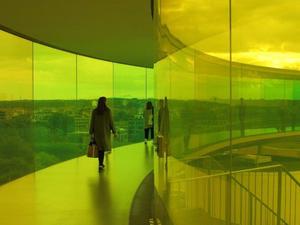 Inside the museum, the collection is largely contemporary and won’t please everybody, although it certainly guarantees to challenge your perceptions. I’m an old-fashioned kind of girl and my favourites were all amongst the old masters on the top floor, but this is a collection that nobody should miss.
Inside the museum, the collection is largely contemporary and won’t please everybody, although it certainly guarantees to challenge your perceptions. I’m an old-fashioned kind of girl and my favourites were all amongst the old masters on the top floor, but this is a collection that nobody should miss.
My absolute favourite however lay just outside the city in a wooded park with distant views of the sea. The Moesgaard Museum of early Danish history opened in October 2014 in a new building that seems part of its hillside location, the sloping roof covered in turf and open to the public. This outstanding museum replaces the original museum, previously contained in a Renaissance house at the bottom of the park, and is the last word in interactive education with engaging displays covering the Iron Age and Stone Age, the Vikings and the physical development of Man.
As I pass into the Bronze Age for instance, the temperature changes and the floor becomes springy, a spine-tingling evocation of the climatic conditions of the time. Here I find three preserved bodies discovered in a Bronze Age barrow, traces of their clothing, hair and teeth still clearly visible.
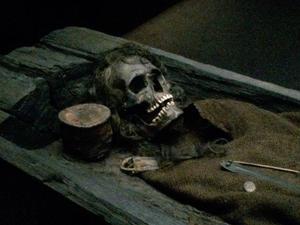 I find it hard to take my eyes off the wizened faces of people who walked this land 3,500 years ago. Who were they? How did they live? And then my guide tells me that the ethnic origin and profession of the woman have been identified by her DNA and clothing style – not a Viking at all, but an exotic dancer from southern Germany!
I find it hard to take my eyes off the wizened faces of people who walked this land 3,500 years ago. Who were they? How did they live? And then my guide tells me that the ethnic origin and profession of the woman have been identified by her DNA and clothing style – not a Viking at all, but an exotic dancer from southern Germany!
How can you not love a museum like that?
Moesgaard will be the location for one of the key events of Aarhus 2017 – an open air Viking saga acted out in the park and on the roof of the museum. Others events include an urban development exhibition, an outdoor art trail, and a wide range of concerts and exhibitions – details from www.aarhus2017.dk. There’ll also be a wide range of foodie events for the European Year of Gastronomy – details from www.danishfoodregion.eu
